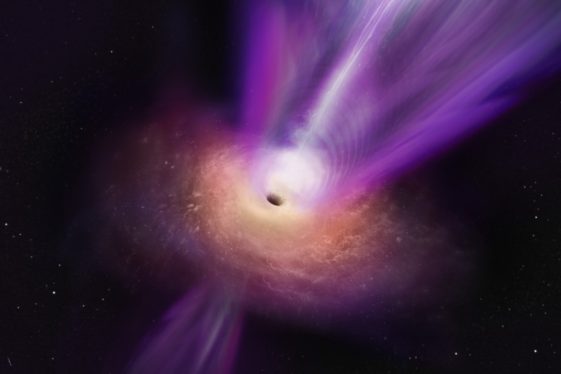Zooming in on the black hole and jet of Messier 87. Credit: ESO/L. Calçada, Digitized Sky Survey 2, ESA/Hubble, RadioAstron, De Gasperin et al., Kim et al., R. Lu and E. Ros (GMVA), S. Dagnello (NRAO/AUI/NSF).
Astronomers today unveiled new images of the black hole at the center of the M87 galaxy, showing both a fluffier version of the black hole’s glowing ring and its powerful jet together in the same image for the first time. The Event Horizon Telescope (EHT) first imaged the black hole in 2017; this new image is based on data collected by the Global Millimeter VLBI Array (GMVA), which captured radio emissions in a slightly different but scientifically significant wavelength. The details of the new observational data, image processing methods, and associated computer simulations are described in a new paper published in the journal Nature.
“This is the first image where we are able to pin down where the ring is relative to the powerful jet escaping out of the central black hole,” said co-author Kazunori Akiyama of MIT’s Haystack Observatory, who developed the imaging software used to visualize the black hole. “Now we can start to address questions such as how particles are accelerated and heated and many other mysteries around the black hole more deeply.”
As we’ve reported previously, the EHT is actually a collection of telescopes scattered around the globe, including hardware from Hawaii to Europe and from the South Pole to Greenland. The “telescope” is created by a process called interferometry, which uses light captured at different locations to build an image with a resolution that is the equivalent of a giant telescope (a telescope so big, it’s as if it were as large as the distance between the most distant locations of the individual telescopes).
Read 9 remaining paragraphs | Comments


